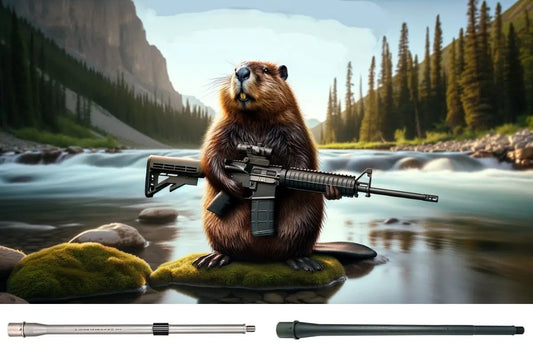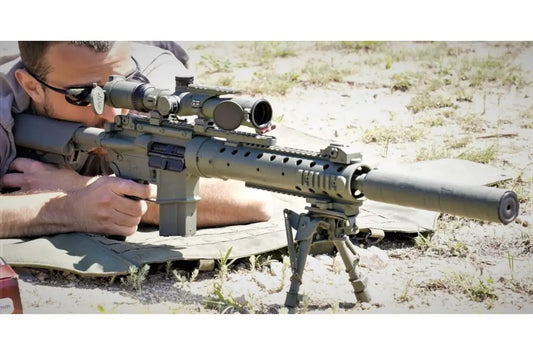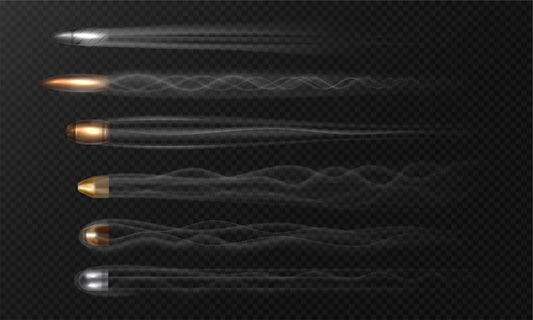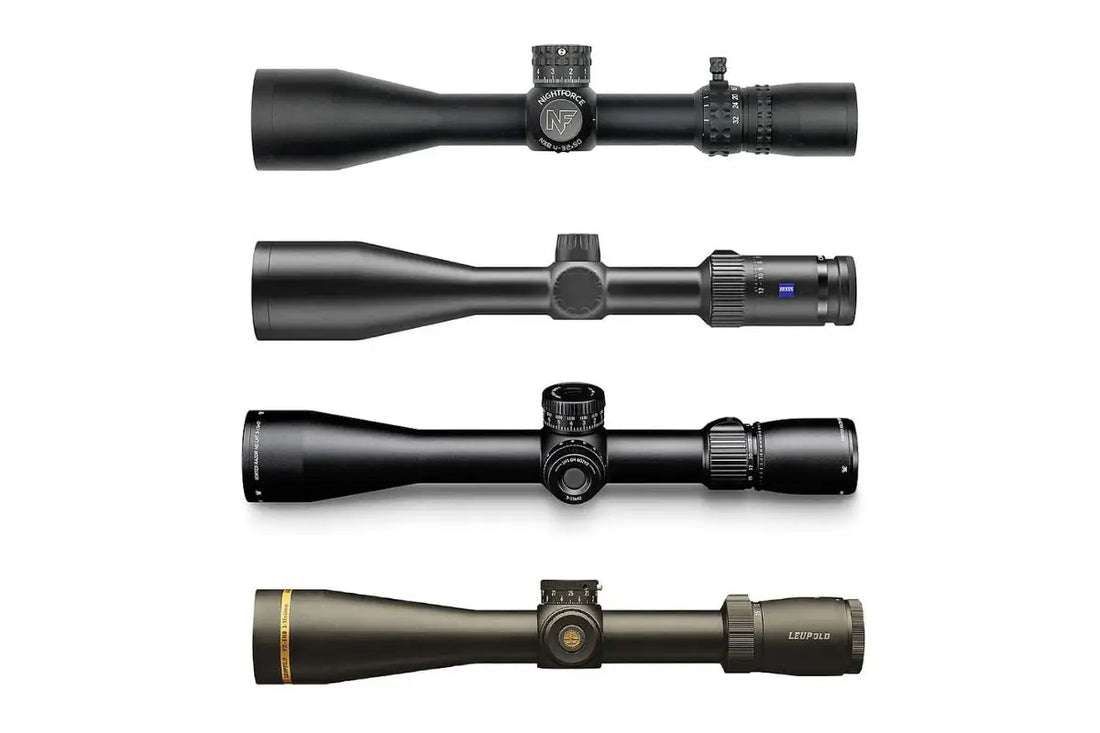
How to Choose the Right Hunting Scope: The Real Impact of Objective Lens Size and Tube Diameter on Clarity and Light Transmission
Summary Table: Objective Lens Size vs. Tube Size in Hunting Scopes
|
Feature |
Objective Lens Size (e.g., 32mm–56mm) |
Tube Diameter (1" vs 30mm vs 34mm) |
|
Light Transmission |
Larger lens gathers more light for low-light performance |
Bigger tube supports wider internal light path |
|
Clarity |
Improved with larger lens, especially at higher magnifications |
Enhanced by better glass, coatings, and internal space |
|
Weight & Bulk |
Larger objectives add front-heavy bulk |
Larger tubes increase overall weight slightly |
|
Mounting Height |
Larger lenses require higher rings |
Larger tubes need compatible rings, less of a concern |
|
Adjustment Range |
Mostly unaffected |
Larger tubes = more internal elevation/windage travel |
|
Best Use Case |
Low-light hunting, long-range glassing |
Long-range precision, dialing for shots |
Choosing a hunting scope isn’t just about magnification and reticles. Two of the most misunderstood — and most consequential — factors are the objective lens size and tube diameter. Together, they dictate how much light your optic can gather, how clear the image will be, and how well you can hunt in low-light conditions like the first and last legal shooting minutes of the day.
In this deep-dive article, we break down:
- What objective lens and tube sizes really do (not just the marketing pitch),
- The optical physics behind light transmission,
- How to optimize your setup for deer, elk, hog, and predator hunting, and
- Specific high-performance scopes that exemplify these principles.
Understanding Objective Lens Size: What It Is and Why It Matters
The objective lens is the front-most lens on your rifle scope, typically measured in millimeters (e.g., 40mm, 50mm, 56mm).
What It Affects:
- Light Gathering: A 50mm lens physically gathers more light than a 40mm lens. Think of it like a funnel: a wider opening collects more.
- Brightness: More light = brighter image, especially in low light.
- Exit Pupil: The size of the exit pupil (objective size ÷ magnification) dictates how much light reaches your eye.
Example:
At 10x magnification:
- 50mm lens = 5mm exit pupil (50 ÷ 10)
- 40mm lens = 4mm exit pupil (40 ÷ 10)
A 5mm pupil aligns well with the human eye’s dilation under low light. Less than 4mm may start to appear dim at dawn/dusk.
Pros of Larger Objective Lenses:
- Superior low-light performance
- Brighter image at higher magnification
- Ideal for long-range and open country hunting
Cons:
- Heavier, front-heavy balance
- Requires higher rings, which affects cheek weld
- More expensive (larger, higher-quality glass is costly)
Expert Insight:
“There’s a reason why most premium low-light hunting scopes are 50mm or more. You simply can’t cheat optical physics.”
— Aaron Davidson, Founder of Gunwerks
Tube Size Demystified: 1-inch vs 30mm vs 34mm
The main tube diameter refers to the central part of the scope body — usually 1-inch (25.4mm), 30mm, or 34mm.
What Tube Size Does Not Do:
Contrary to internet myths, tube size does not increase light transmission by itself. Instead, it facilitates:
- Wider adjustment range (windage/elevation)
- Stronger structural rigidity
- Room for larger internal lenses, which can help clarity and transmission.
Pros of 30mm and 34mm Tubes:
- Greater internal adjustment travel (important for dialing elevation)
- Better mechanical durability (especially on magnum rifles)
- Slightly better light transmission when paired with quality lenses
Cons:
- Requires specific 30mm or 34mm rings (costlier than 1")
- Adds ~2–4 oz more weight
- Minimal real-world light gain unless paired with top-tier glass
Pro Tip:
Focus on tube diameter for adjustment range, not light transmission. A 30mm scope with mediocre glass won’t outperform a 1” scope with ED glass and coatings.
Clarity and Light Transmission: A Closer Look
Optical Quality ≠ Size Alone
While size helps, clarity is mostly dictated by:
- Glass quality (HD, ED, fluorite elements)
- Lens coatings (fully multi-coated, phase correction)
- Internal baffling and construction
Real-World Example:
The Leupold VX-5HD 3-15x44mm (30mm tube) has excellent low-light clarity and adjustment range while staying light at 19 oz. It consistently outperforms cheaper 50mm scopes in twilight due to superior glass and coatings.
🔬 Light Transmission Numbers:
|
Scope |
Tube Size |
Objective |
Light Transmission (manufacturer claimed) |
|
Swarovski Z5 3.5-18x44 |
1” |
44mm |
90–91% |
|
Nightforce ATACR 5-25x56 |
34mm |
56mm |
92%+ |
|
Vortex Razor HD LHT 3-15x42 |
30mm |
42mm |
~91% |
Note: The human eye perceives diminishing returns past 90% transmission.
Ideal Configurations for Common Hunting Scenarios
Dense Timber / Short-Range Hunting:
- Recommendation: 1-6x24 or 2-10x32
- Why: Compact, fast target acquisition
- Product: Leupold VX-Freedom 1.5-4x20 (1")
Open Country / Long-Range:
- Recommendation: 3-15x50 or 4-16x56 with 30mm or 34mm tube
- Why: Light gathering, dialing capability
- Product: Nightforce NX8 4-32x50 F1 (30mm)
Low-Light Big Game (e.g., elk or whitetail at dusk):
- Recommendation: 3-12x50 with high-transmission coatings
- Product: Swarovski Z3 3-10x42 (1") or Zeiss Conquest V4 3-12x56 (30mm)
Mounting and Rifle Compatibility
Considerations for Objective Size:
- 50mm objectives often require medium or high rings
- Higher scope = higher cheek weld, potentially requiring an adjustable stock or cheek riser
Tube Size and Ring Mounting:
- Ensure ring diameter matches the scope (1", 30mm, 34mm)
- Brands like Seekins Precision, Badger Ordnance, and Spuhr make robust mounts
The Sweet Spot: Balancing Portability and Performance
For most hunters:
- Objective Size: 40–50mm is ideal
- Tube Size: 30mm hits the sweet spot
Avoid chasing giant 56mm objectives unless you're routinely glassing past legal shooting hours or hunting at extreme range.
Top 5 Hunting Scopes by Objective and Tube Design
|
Scope |
Objective |
Tube |
Weight |
Ideal Use Case |
|
44mm |
30mm |
19 oz |
All-around big game |
|
|
42mm |
30mm |
19.1 oz |
Lightweight western hunting |
|
|
56mm |
30mm |
22 oz |
Maximum light transmission at dusk |
|
|
50mm |
30mm |
28.3 oz |
Long-range and ELR hunting |
|
|
44mm |
1" |
15.9 oz |
Precision glassing, alpine terrain |
⚡ TL;DR for Skimmers
- Objective lens size affects light-gathering. Go larger (e.g. 50mm) for dawn/dusk clarity.
- Tube size (30mm or 34mm) gives better internal adjustments, not necessarily more light.
- 30mm tubes and 44-50mm objectives are the optimal balance for most hunters.
- Focus on glass quality and coatings over raw size.
- Choose proven optics like Leupold VX-5HD, Zeiss V4, or Nightforce NX8 for top performance.
Click here to browse top-rated hunting scopes at OpticsPlanet.com
